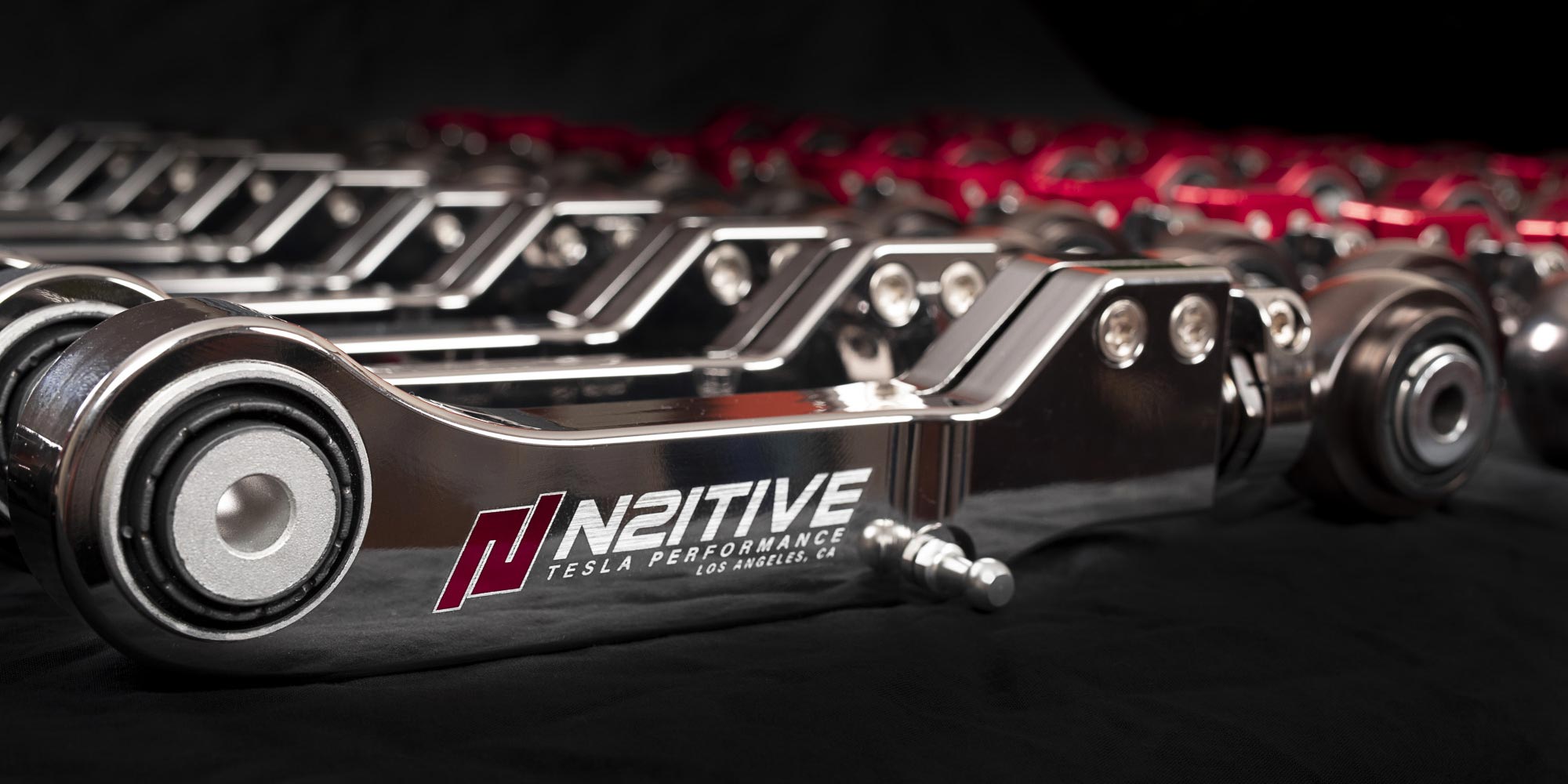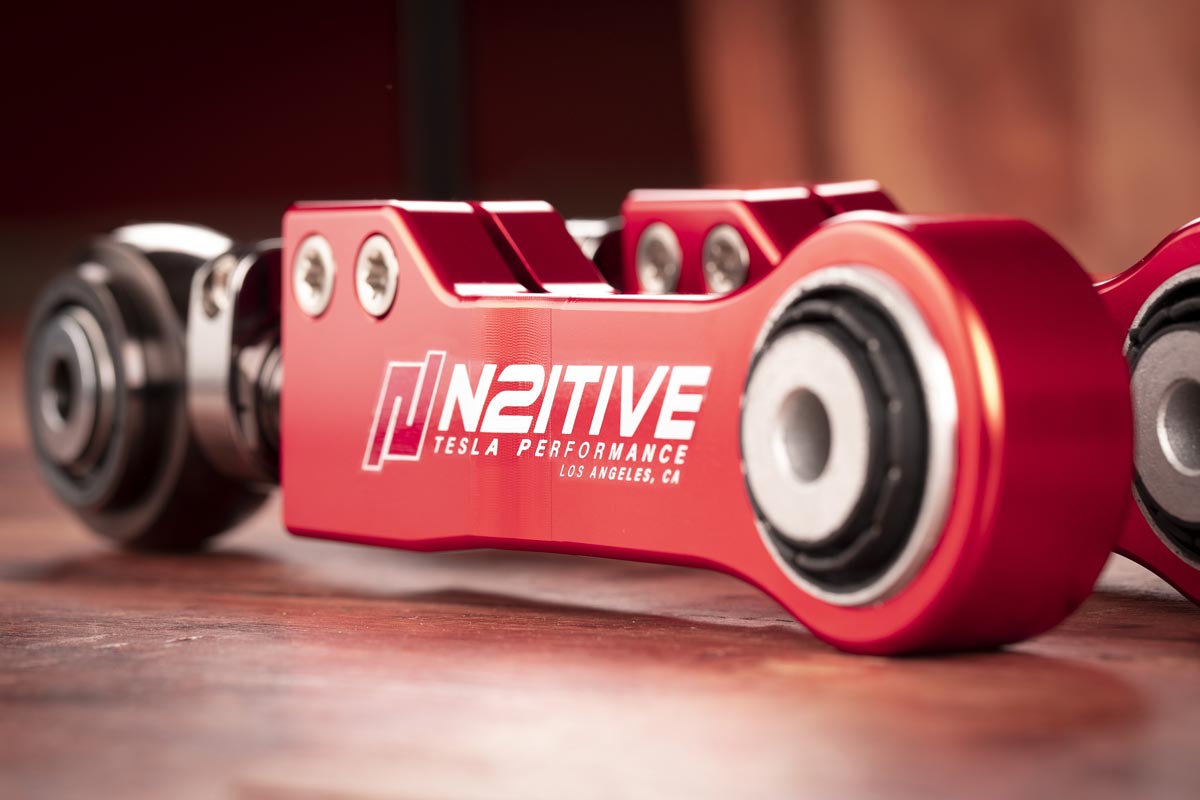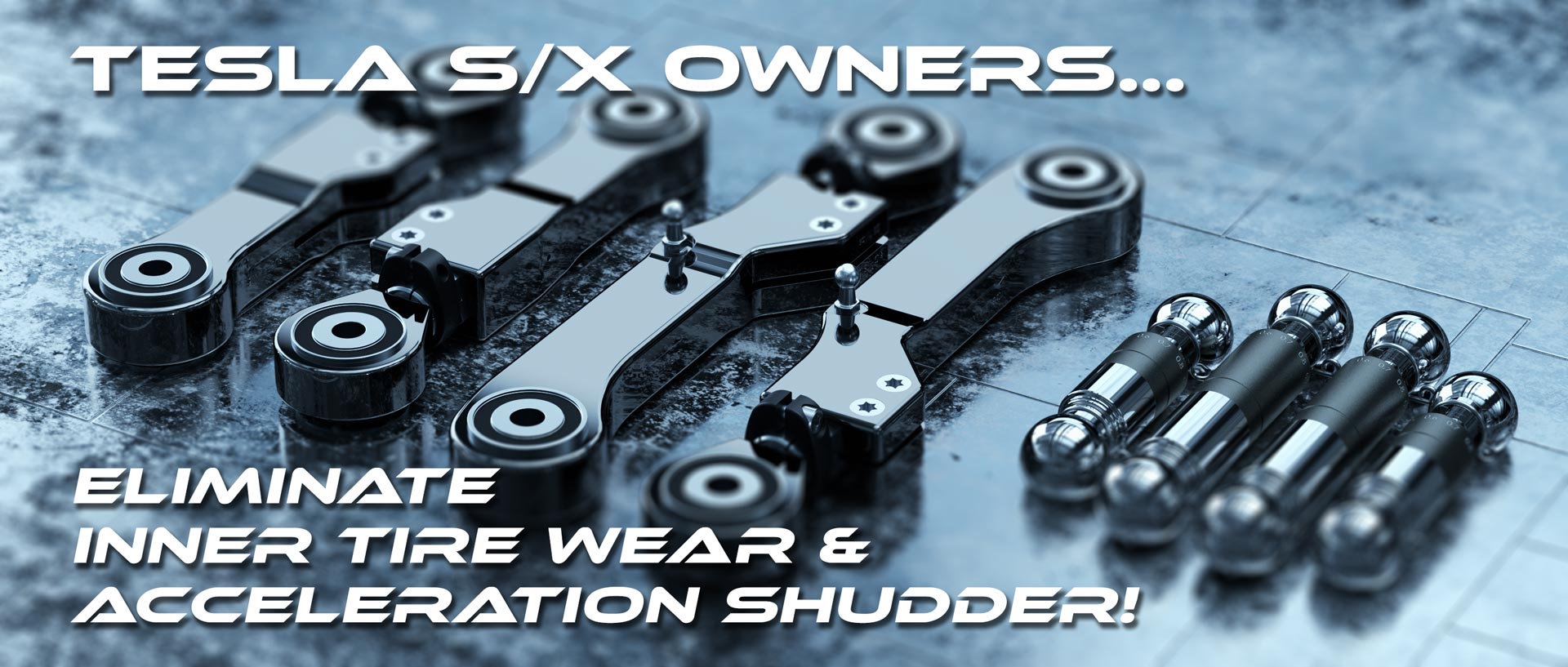I don’t think I’ve ever read a thread online about Tesla tire wear without the argument of whether it was excess negative toe or negative camber that was wearing out someone’s tires. Those responding are often times quite adamant in their position with most people seeming to simply repeat what they’ve heard online about the general topic of tire wear. With the Tesla S or X though the answer is not so simple and I will explain why.
First, the problem…
The Tesla Model S and X are well known to have an issue with inner rear tire wear. Often times the rear tires will last for only 5-10K miles before the steel belts begin to come through on the inside shoulder. Aside from being really dangerous it’s also very frustrating to have to spend so much money and time getting new tires every several months. The problem is well hidden as you won’t notice the inner tire wear until you lie on the ground and look way under at the inside edge of the rear tires. Many Tesla owners won’t ever notice it until the damage is so bad that the air begins to mysteriously leak out slowly or they get a blowout.
There are certain aspects about the alignment that you can at least partially determine by inspecting the tires. So let’s look a couple of tires off of a Tesla to get a deeper understanding.
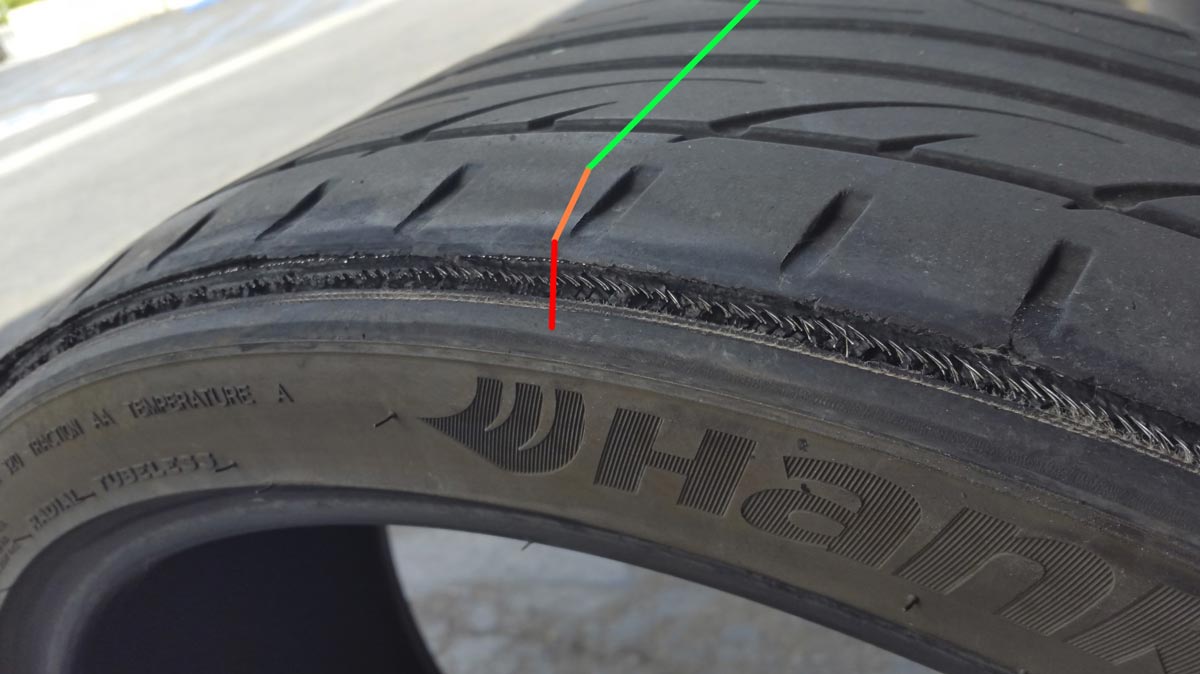
Notice in the above image that the tire has very even tire wear across the top green area. As it gets closer to the edge, marked by the orange section, you can see the wear start to quickly become pronounced. As we move over to the inside shoulder (red line), that remains out of site while installed on your Tesla, you can see the wear dig in greatly here. So much so that not only is the steel belt showing through but virtually all of the individual steel wires have been severed. This tire could fairly easily separate at high speeds and was loosing air before being brought into the tire shop. The predominate alignment issue with this particular tire was excessive negative camber and not toe. You can see this because the tire overall looks good without much feathering until right on the inner edge. The negative camber on this model S was about -2.5°’s. At this angle, much of the weight of the vehicle (Teslas being among the heaviest of cars) is pushing down on that inside edge. Therefore the inside edge will take the blunt of the force and wear.
So in this case you might think well then why not just add some positive camber so it won’t wear out on the edge like that. And that would be a great idea, but there is no way to adjust the rear camber on Teslas with the factory control arms. Tesla uses fixed or non-adjustable camber arms on their vehicles. Only the rear toe can be adjusted via an eccentric bolt where the toe arm attaches to the subframe. So that’s why we created the first mass produced adjustable camber arms for the Tesla Model X and S. Our SX-1 adjustable camber arms allow you to dial in just the right amount of negative camber on your Tesla S or X to prevent inner tire wear and maintain great traction.
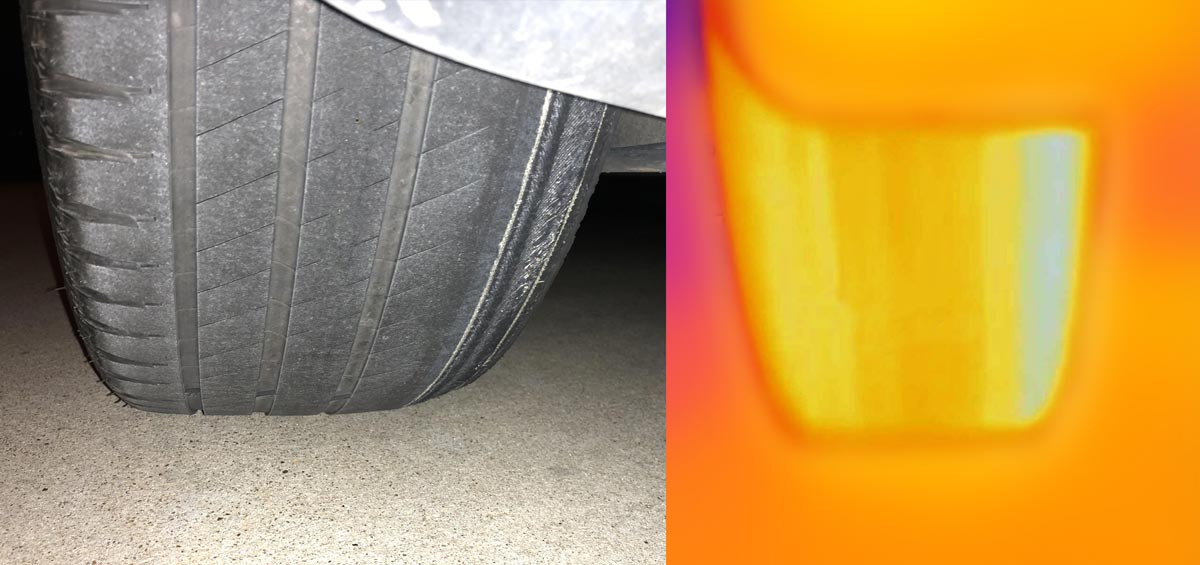
Above is another example of inner tire wear on a Tesla Model X. Notice on the thermal image on the right, there is a white hot inside section clearly showing where the greatest friction and resulting tire wear is taking place. With this tire however you can see that the damage is much more feathered across the width of the tire. This shows us that while there is still excessive negative camber, there is clearly damage from too much negative toe as well. In fact too much toe out or negative toe can wear out a tire much faster than overzealous negative camber! If your toe is out too much then you can eat through a set of tires in under 1,000 miles which is not the case with excessive negative camber. Good alignment is critical in proper tire wear. On a Tesla you adjust the toe using the eccentric bolt that connects the toe arm to the subframe. However, this gives you only 3.5mm worth of adjustment from the neutral position. This works okay for basic alignment to get the car into spec, however being in spec does not equal best tire wear. It simply means that you are within a certain range that Tesla considers suitable for proper performance and safety. We wanted better tire wear and greater adjustability with toe so we created the N2itive TSX-1 adjustable toe arms for the Tesla Model S and X. The TSX-1 gives you 15mm of toe adjustment in the negative or positive direction for a total adjustability of 30mm.
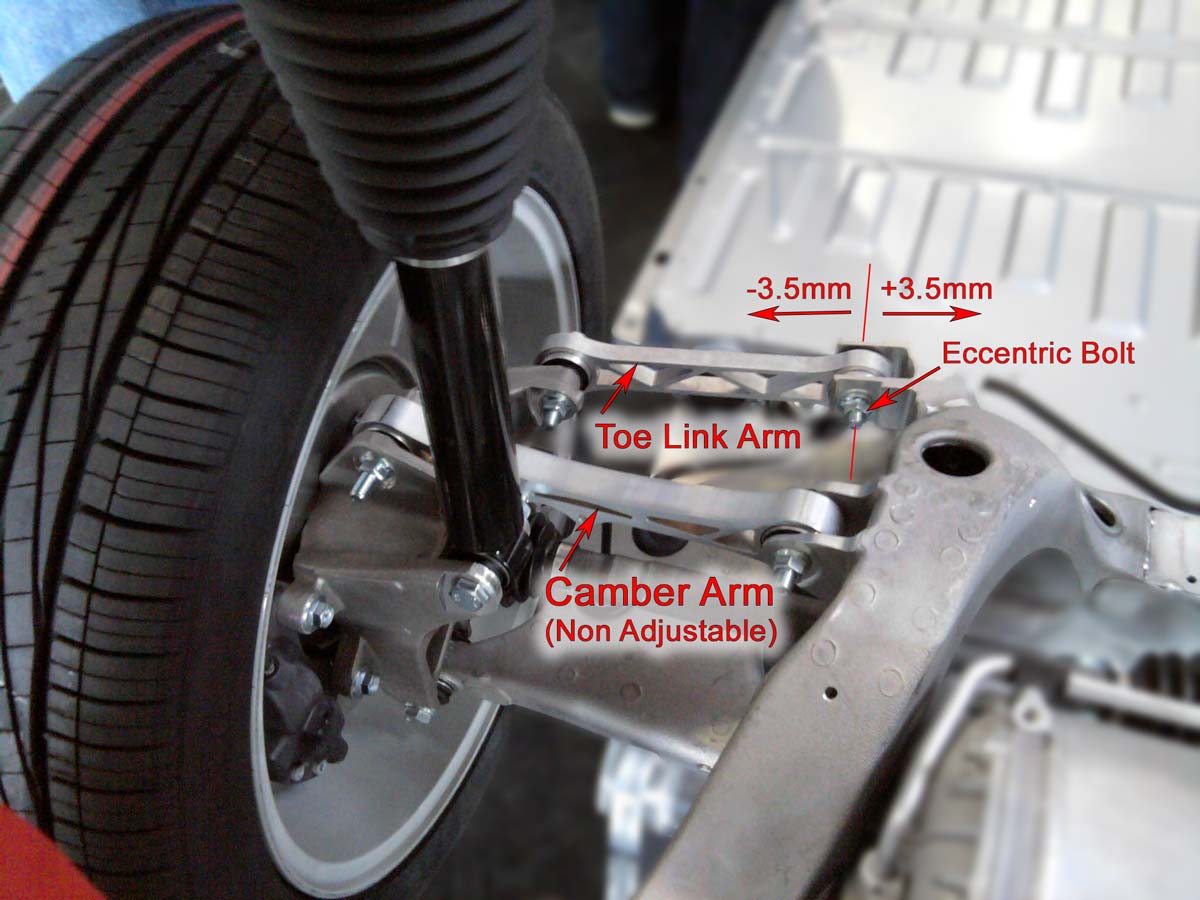
Above is a photo of the factory toe arm and camber arm so you can get an idea of how they fit into the rear suspension.
So then on a Tesla, what eats the inside of the tires faster? While negative toe can theoretically chew tires up way faster than negative camber, the toe is still somewhat adjustable on a Tesla. So if you’ve had your car aligned and you’re still getting inner tire wear then the answer is excess negative camber which you’ll be able to see by looking at your alignment printout. This is why toe is usually not the culprit on a Tesla like many people assume. Not that it can’t be an issue but most owners complaining about inner tire wear have already tried having the car aligned but the problem still persists. And another thing, as the car gets older the rubber bushings will begin to loose their elasticity and begin to sag which will increase negative camber even more. And, (my grade school teachers would have failed me by now for starting so many sentences with the word, “and”.) if you drive your car in the low position this will add even more negative camber to your alignment. You could easily end up with -2.5° to -3.5°’s of camber. In my opinion the ideal rear suspension alignment settings on a Tesla S or X would be to set the camber to about -1° and set the toe to about 0.20 to 0.25° at the ride height you drive at most often (with air suspension). For most owners that would simply be the standard ride height. For those who are using our RSX-1 lowering links or who continually set a low ride height in the software then you will want to align your Tesla at that ride height. Then you will have great alignment at any height setting and save a lot of money on needing new tires prematurely.
What’s the best solution to fix rear inner tire wear? The best solution would be to install both the N2itive SX-1 adjustable camber arms and the TSX-1 adjustable toe arms. This will give you the greatest flexibility in your alignment under any circumstance and at any height. If you drive your Tesla at a standard ride height and budget is a concern then just getting the SX-1 adjustable camber arms will improve your alignment a lot and will reduce most if not all of your inner tire wear. If you drive your Tesla lowered, installing both SX-1 and TSX-1 arms would be mandatory for proper alignment. With a lowered Tesla you simply won’t be able to adjust the toe out enough once you dial in the proper camber setting. The geometry of the suspension will have changed too drastically. There is more info on that on the front page.
If you have any questions about this article or any of our products, please reach out to us. We are happy to review your alignment printout or help you out however we can. Please share this article with your Tesla friends.
